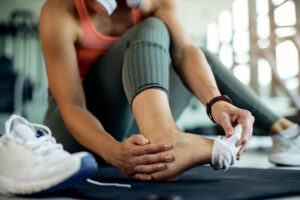Preventing a yeast infection is on the minds of many women. This is especially true if you get this common fungal infection quite often. Sometimes the symptoms of a yeast infection can be annoying, but the good news is that there are a few home remedies you can check out.
Interestingly, what you eat could make preventing a yeast infection easier. And this goes for after sex too! If you want to stop this fungal infection in its tracks before it gets itchy, one of the best home remedies may be simple old yogurt.
There are other home remedies below too, if you just can’t stand yogurt. Let’s take a closer look at how easy preventing a yeast infection can be.
Preventing a Yeast Infection After Sex with Yogurt
Who knew yogurt would be one of the best foods for preventing a yeast infection? Food may not be on the top of your list after sex, but yogurt is certainly one of the top home remedies you can’t risk ignoring.
The reason why yogurt is a powerful fungal infection fighter is its pro-biotic richness. After sex yogurt can restore your pH balance by replenishing good bacteria to your exhausted body.
Here are a few yogurt facts for preventing a yeast infection . . .
- It has lactobacillus acidophilus which is a good bacteria in your vagina.
- Lactobacillus acidophilus gives yogurt its fungal infection power by making hydrogen peroxide by mixing with sugar.
- Hydrogen peroxide kills yeast and decreases your body’s acidic levels.
Preventing a yeast infection after sex with yogurt means eating two cups per day. You can suck one down in the morning, and another after your evening bedroom activities.
Women’s Health Related Posts:
Do You Know the Difference Between UTI and Yeast Infection?
5 Effective Solutions for Yeast Infections Women Need to Know

More Home Remedies for Embarrassing Placed Fungal Infection
Fighting that embarrassing fungal infection can be easy if you’re eating nutritious foods other than yogurt. There are plenty of after sex home remedies that may already be in your fridge.
Cruciferous veggies are other foods for preventing a yeast infection. Cabbage, broccoli, Brussels sprouts, and radishes are great yeast killers.
Ginger is another yeast killer, containing gingerols and shogaols, which are antifungal inflammatory fighters. And if you like wild salmon, add some ginger too it and get double the benefits.
Salmon is loaded with known fungal infection fighting omega-3 fatty acids. These are simply a few home remedies you can use for preventing a yeast infection.

Know the Fungal Infection Symptoms!
Preventing a yeast infection is sometimes challenging. If you feel any vaginal irritation, itching, burning, or issues during urination, you may need to stock up on some yogurt.
Enlist the above home remedies if you notice any of the following symptoms . . .
- Vaginal irritation
- Burning sensation during urination
- Vaginal itching
- Painful sex
- Rash, redness, or soreness
- Abnormal vaginal discharge
If you notice any of these symptoms, you should consult a doctor before trying any alternative remedies. Many of the above symptoms could be more serious conditions, like a UTI.
Talk to a doctor, like Dr. Maureen Fleming, an OBGYN with 25 years of experience, for free, and get answers to all your women’s health questions.
Dr. Fleming: I had a thriving practice for 25 years in general obstetrics and gynecology. My patients told me I was kind and gentle. I also enjoyed working with Creighton University’s medical school. I taught residents and students. I especially enjoyed obstetrics and surgery. Endometriosis, pelvic pain, urinary incontinence, cervical dysplasia and pelvic masses were special areas of interest.
Submitted by Dr. Richard Honaker: https://www.independentmedicalexaminer.com/IME-Directory/Virginia/Dr-Richard-A-Honaker-MD.asp







